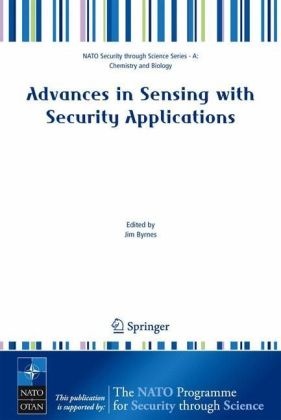Ulteriori informazioni
The fusion of basic ideas in mathematics, biology, and chemistry with ongoing improvements in hardware and computation offers the promise of much more sophisticated and accurate sensing capabilities than currently exist. Coupled with the dramatic rise in the need for surveillance in innumerable aspects of our daily lives brought about by hostile acts deemed unimaginable only a few short years ago, the time is ripe for scientists in the diverse areas of sensing and security to join together in a concerted effort to combat the new brands of terrorism. The contents of this volume can be divided into three broadly defined but interrelated areas:
The increasing need for fast and accurate sensing - what is the threat;
The scientific underpinnings of the ongoing revolution in sensing;
Specific sensing algorithms and techniques.
A deep understanding of these three topics, and of their interdependency, is clearly crucial to meet the increasing sophistication of those who wish to do us harm. The contributors to this volume are many of the world's leading experts in the development of new methodologies to both comprehend and predict these threats and to effectively deal with them.
Sommario
"Preface. Acknowledgments.
Bistatic and multistatic radar sensors for homeland security; G.J. Baker and H.D. Griffiths. 1. Introduction. 2. Definitions. 3. Bistatic essentials. 4. Passive Coherent Location (PCL). 5. Multistatic radar. 6. Conclusions. 7. Acknowledgments. References.-
The Terrorist Threat and Its Implications for Sensor Technologies; J.L. Brower. 1. Introduction. 2. What is Terrorism? 3. General Trends in Terrorism. 4. Significant Domestic Threats. 5. State Sponsored Terrorism. 6. Future Threats. 7. Preventions Efforts: The Role of Sensors. 8. Improving Sensors. 9. Conclusions. References.-
Advances in sensors; the lessons from Neurosciences; M. Costa. 1. Energies that affect earth living organisms survival. 2. The emergence of a nervous system. 3. Neurons as excitable cells. 4. Sensory neurons. 5. Sensory transduction. 6. Molecules of sensory transduction. 7. Hearing system and mechanosensation. 8. Temperature receptors. 9. Pain receptors. 10. Olfaction. 11. Vision. 12. General view of the sensory systems. References.-
Chemical sensors and chemical sensor systems; A. Orsini, A. D'Amico. 1. Introduction-Parameters. 2. Fundamentals Devices. 3. Thermopiles. 4. Kelvin Probe. 5. Bulk Acoustic Waves. 6. Surface Acoustic Waves. 7. Natural and Artificial Olfaction. 8. Optical Fibre Sensor. 9. Surface Plasmon Resonance. 10. Conclusions. References.-
Wireless Sensor Networks for Security: Issues and Challenges; T. Onel, et al. 1. Introduction. 2. Neyman-Pearson Detection. 3. Breach Probability Analysis [30]. 4. Data Processing Architecture for Target Tracking. 5. Maximum Mutual Information Based Sensor Selection Algorithm. 6. Simulation Results. 7. Conclusion. References.-
Internet-Scale Chemical Sensing; D. Diamond. 1. Introduction. 2. Chemical Sensing and Bios ensing. 3. Miniaturised Analytical Instruments - Lab on a Chip Devices. 4"

